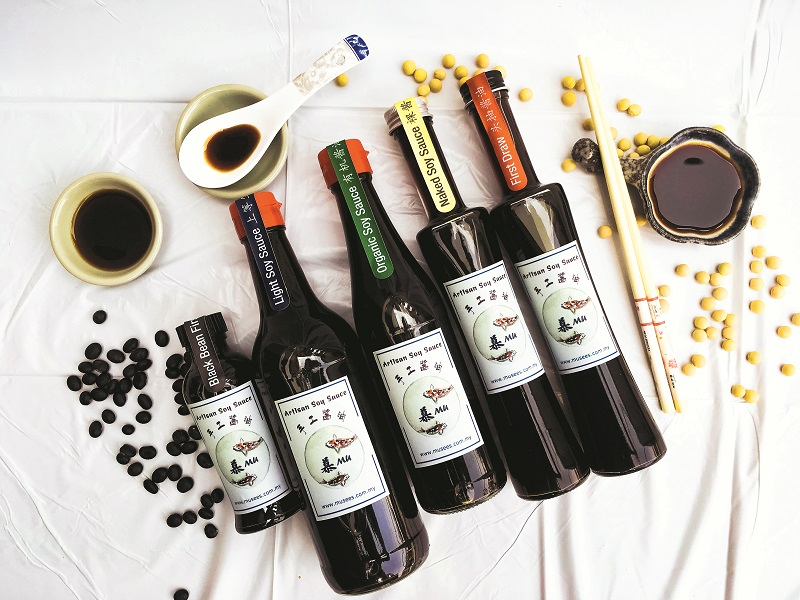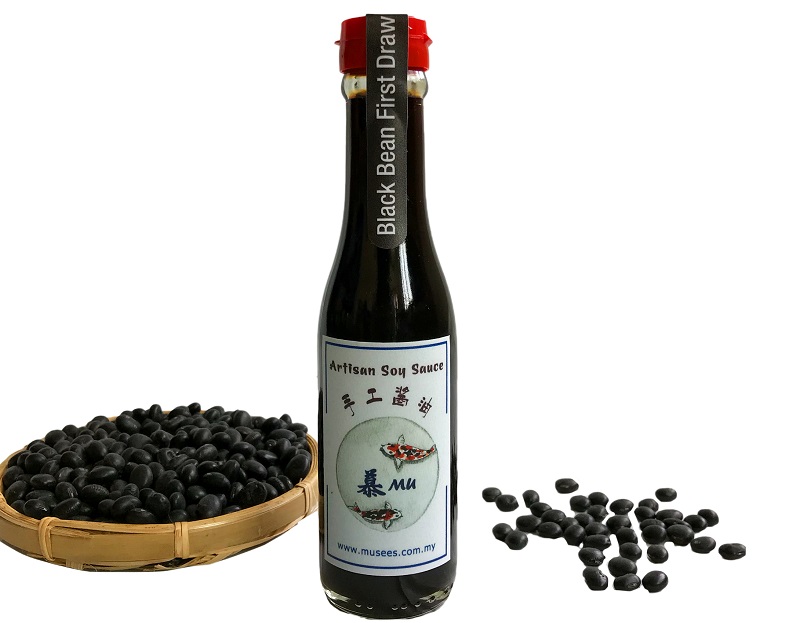
Shirley Chia left her banking job to join her family's business (Photo: Mohd Izwan Mohd Nazam/The Edge)
Malaysians often take soy sauce for granted — drizzling it on most dishes or soaking cili padi in it to enhance the taste of our meals. For Shirley Chia, it is more than just a regular condiment — it’s an art to produce it. Her family has been running a soy sauce company for decades using traditional methods.
Having worked in a bank for 11 years, Chia decided that it was time to join her family’s business. “I see my parents working very hard to keep the business going ... it’s still a traditional business. I was thinking, if people can appreciate artisan cakes and breads, why not artisanal soy sauce? My family’s business has been going on for two generations, from my grandfather to my father. If I don’t take over, then it will be lost,” she says.
Chia admits that she loathed to leave her bank job. “I would say that without my previous job, I wouldn’t be who I am today.”
Still, adamant to keep the family business going, she gets down to work, modernising the operations — a task her previous job certainly prepared her for.
group_1-2.jpg

Her main challenge was to change the administration processes from paperwork to online and convince her family that this was necessary. “It took me a long time to get the company to stop using cheques and do online transfers. It took six months for the administrative staff to get used to it and another six months for the sales people to get into it. I’d tell them, ‘Just use your mobile phones to key in the orders. Don’t use handwritten bills anymore’,” says Chia.
It was after this that she started her new artisanal soy sauce company. Chia’s parents’ company sells its sauces to restaurants as competition in the market is stiff. Still, she believes in the potential of its premium products. “In Malaysia, soy sauce makers seldom sell the first draws. They usually keep it and mix it with the second, third and fourth draws to improve their flavour. So, the first draw is a secret weapon,” she explains.
Chia says the labour-intensive method of making soy sauce is a dying art, with big companies opting for larger tanks to produce in big quantities. “We use pottery urns, whereas mass-production companies use fibre tanks, which have bigger capacities and the work is different. It’s just like the char kuey teow stalls — they can do it one plate at a time, or 10 plates in one go. An urn will produce about 100 small bottles of soy sauce while a tank will produce two to three gallons,” she says. While the bigger companies have adopted automation, Chia still makes her products using manual labour.
Before coming up with a brand, Chia took bottles of her first-draw soy sauce to Publika’s Chinese New Year bazaar in February. “At the time, I didn’t even have a brand ... it was just a white label I printed with my office barcode printer,” she says.
After receiving a favourable response, she launched her company, Musees — a name that holds a lot of significance. “‘Musees’ is ‘museum’ in French. I want to build a food museum. When I was in the US, the food museum there was so amazing. Each type of food has a story behind it and people appreciate the stories. So, why not have a Malaysian food museum? I’m starting with my family’s soy sauce ... [the recipe for] this handmade soy sauce can be preserved for future generations,” says Chia.
Chia’s products now carry the Mu Artisan Soy Sauce label. “Mu” comes from the word “Musees” as well as the Chinese words yang mu, which mean honour. “I am thankful to my grandfather and father. I will honour them and pass on their good work to the next generation,” says Chia.
Musees currently has three offerings — its signature first draw, naked soy sauce and organic bean soy sauce. The first-draw sauce has sugar added to it while the naked sauce is without sugar. Both are more for finishing dishes or to be used as dips while the organic bean soy sauce is great for cooking.
“All soy sauce in the market has sugar added to it to balance the saltiness. For soft drinks, you have to state the sugar content, but for soy sauce, you don’t have to. So, you don’t know how much sugar is added. For soy sauce, most manufacturers add monosodium glutamate to bring out the flavour.”
db4d5d0a68d34c52846d56e5efbb41e4.jpg

But Chia is quick to add that Musees’ products have no additives or chemicals and all of them are from the first draw. Chia’s family business sells the second and third-draw products to restaurants and other businesses.
Musees also has seasonal sauces such as the black bean soy sauce, which Chia created after being inspired by her visit to a Taiwanese soy sauce factory that uses black beans. “Black beans have a fuller taste. The black bean soy sauce is seasonal because it’s expensive — the price is triple that of yellow beans,” says Chia.
According to Chia, Musees will be launching a gula melaka soy sauce soon. It is said to taste like salted caramel. Currently, Mu Artisan Soy Sauce can be purchased via Musees’ website or from Snackfood in Bangsar or bazaars.
Chia also runs workshops that include tasting sessions. Participants are also guided on how to make their own soy sauce. Many are surprised to know that they have to wait for three months to taste the fruits of their labours, says Chia. “What keeps me going is when people say the taste of my soy sauce brings back memories, especially those who are in their forties, fifties and above ... they remember the taste of traditional soy sauce.”
This article first appeared on Nov 11, 2019 in The Edge Malaysia.


